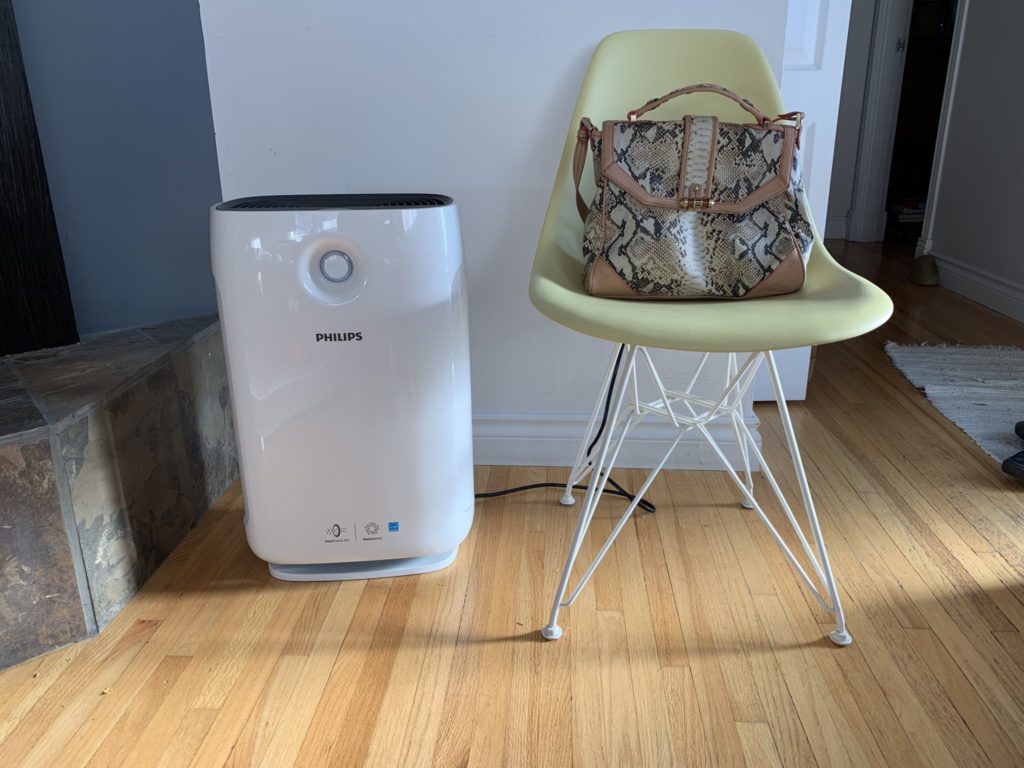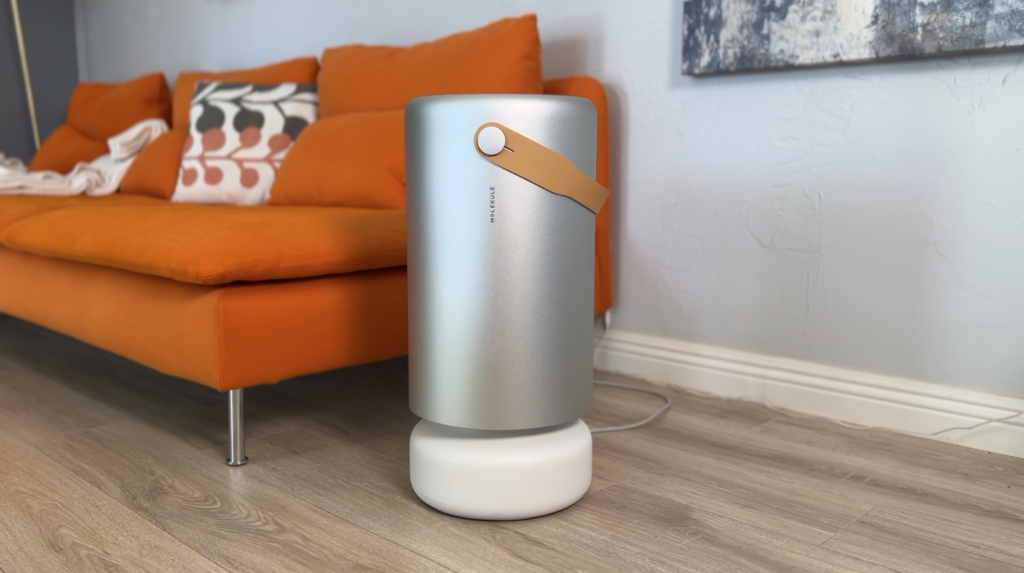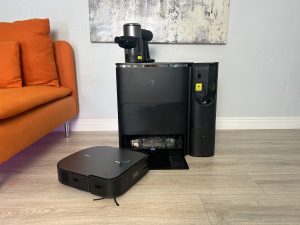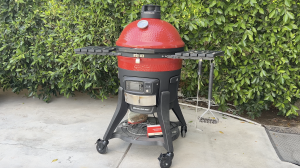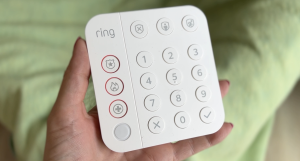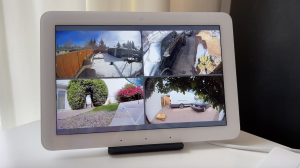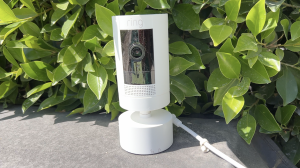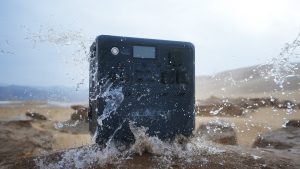At one time they almost seemed like a gimmick; air purifiers have gone from pricey and unnecessary extra to a device which can literally help some of us get through a day. But do you really need an air purifier, and what should you look for in an air purifier? Why should you buy an air purifier and how does an air purifier work? We’ve pulled together all the best basic information about what you should look for when buying an air purifier
Why buy an Air Purifier?
Air purifiers are a great way to keep your home or office clean and fresh. It catches air in the room and puts it through a series of filters that screen out harmful substances. In the process, they also help reduce bad odors. They can also help reduce allergies and asthma symptoms, improve breathing, and even reduce the amount of dust in your home.
How do air purifiers work?
Air purifiers use a variety of methods to clean up the air in your home. Some air purifiers can use HEPA filters, which trap 99% of particles as small as 0.3 microns in size. Other types of purifiers use carbon filters, UV lights, or ionizers that attract particles and remove them from the air.
What should you look for when buying an air purifier?
1) Type of filter: HEPA filters are ideal if you have allergies or asthma because they trap more allergens and dust than other types of filters do. However, if you want something that helps reduce odors, then a carbon filter might be better for you.
2) Noise: Air purifiers have a vacuum to suck in air from the room and push it through to its filters and cleaning chambers. This inevitably causes noise that can get pretty loud. Premium air purifiers often offer noise-reduction features because of this issue.
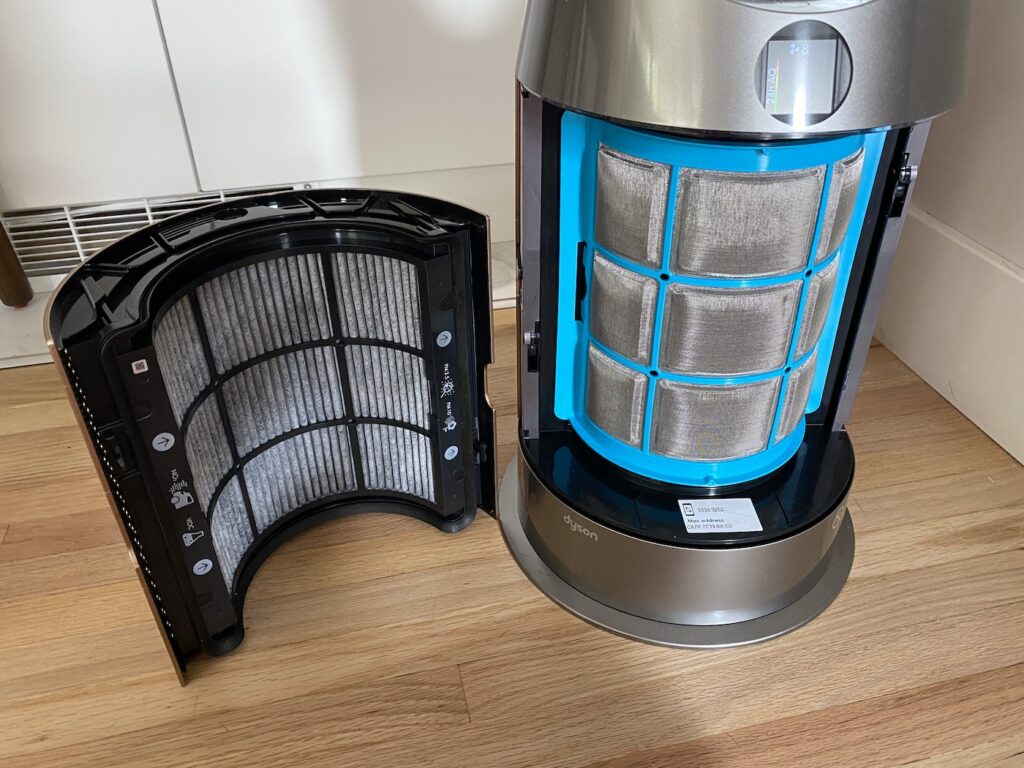
Dyson’s special formaldehyde filter.
3) Coverage: An air purifier’s motor has to have enough suction power to suck air from the entire room that it’s intended to clean to give it a thorough clean. Typically measured in CADR, this is the amount of air that can be cleaned by a purifier in an hour. The higher this number, the better coverage your air purifier will have.
4) User Interface: A good air purifier should have an easy-to-use interface that makes it possible for the user to control its settings and modes. You want to be able to adjust these features without having to worry about buttons getting pushed accidentally—and without having to read through a whole manual just to figure out how it all works. In addition, a good air purifier will come with pre-programmed settings that make it easy for you to get started with just a few clicks.
What are the different types of air purifiers?
HEPA Filters
HEPA stands for high-efficiency particulate air and it’s the technology that enabled air purifiers to get so inexpensive in recent years. These relatively inexpensive filters can trap microorganisms, pollen, smoke, and other fine particles down to 0.3 microns in size! This may be helpful if you’re dealing with pets or smoking in your home, but these units are not very effective at removing particles like pollen and mold spores.
UV light
One of the original technologies to be used in air purifiers is UV lights. However, it didn’t exactly fly off the shelves because of the false rumors about its ozone emissions radioactivity. These days, however, UV light air purifiers have gotten more attention because of research that concluded that UV sterilization is one way of eliminating the coronavirus.
Carbon filters
The final type of air purifier uses carbon filters to help remove odors and other chemicals from the air through a process called adsorption. However, they’re generally ineffective against particles like dust, pollen, and mold spores. The most common type of carbon filter uses activated charcoal, which is essentially a very porous form of carbon that absorbs chemicals and odors.
Should I choose an air purifier with a washable filter?
Some air purifiers feature a washable filter, which can be a useful feature if you’re looking for an affordable alternative to changing the filter regularly. However, these units are typically not as effective at removing particles from the air as those with disposable filters.
How do I know what size air purifier to buy?
Like air conditioners, air purifiers come recommended for different size rooms. If you have a small room or apartment, you’ll probably be able to get by with an air purifier that has a rating for rooms up to 300 square feet. However, if your space is larger (or it’s just harder to keep clean), then you may want to consider purchasing a unit with a higher capacity rating.
How much noise do air purifiers make?
Most models are pretty quiet, but you should still check the product information to make sure. Most air purifiers use a fan to blow air through their filters, so they may have more of a hum than units that use ionizers or UV lights. Also consider how close your room is to other people’s bedrooms—if it’s right next door, then noise might be an issue.
Air purifier maintenance costs
The maintenance costs can vary depending on the type of filter you have. Filters that need to be replaced often will cost more than those that can be washed and reused. A good rule of thumb is to plan on spending around $100 every year or so on maintenance costs.
What to look for when choosing an air purifier?
When looking at an air purifier, the main consideration is “how effective is it at removing particulate matter from the air?” The entire point of an air filter is to take out things we don’t want in our air, whether dust or allergens. These particles can be microscopic, measured in microns.
You’ve probably heard of the term HEPA filter before. HEPA is an acronym that stands for High-Efficiency Particulate Air. To be considered HEPA, the filter must be able to remove 99.97% of things like mold, bacteria, pollen dust, and other airborne particles.
You’ll also want to consider how loud an air filter is no point in having something that will annoy or keep you awake. Also, does the purifier fit in with your room decor?
Another consideration is whether or not the filter itself is removable and washable. If not you’re going to be spending money on new filters throughout the life of your air filter, not to mention the waste associated with disposing of the old ones.
What are the different types of air purifier filters?
Air purifiers can come with many different types of filters. Some models have a built-in filter, often made from carbon or other materials, that can scrub or pull particulate matter out of the air. Some come with no filter at all.
The most popular models these days have either a replaceable or a washable filter. With replaceable filters, you’ll need to purchase and replace the filter disposing of the old one when it’s served its purpose. Washable filters can be removed from the purifier, rinsed, vacuumed or otherwise cleaned off, and placed back in the unit.
Why choose an air purifier with a washable filter?
The biggest plus to a washable filter is that you won’t add any more material to the landfill. You’ll be able to use that filter over and over throughout the life of your air purifier.
Many people find washable air filters more convenient as you can pull them and clean them whenever you choose, and it’ll help you save money in the long run as you won’t have to purchase another one.
You might not want to use a washable air filter because they may be less effective than a built-in or replaceable filter and may not go as far to help with things like pet dander and smoke in the air. You also may risk developing mold in the filter if you don’t allow it to dry fully before placing it back in your purifier.
How to clean a washable filter?
If your washable filter is only slightly clogged, you can use a vacuum on a low setting to help remove the material from either side. If that seems like too much effort, you can simply place the filter in water and leave it there, allowing the stubborn material to soak.
Once the filter is ready to be washed, simply use plain warm water, though distilled water is the best option. If more cleaning is needed, use a gentle household detergent like dish soap and scrub the filter with a soft brush.
Remember to leave the air filter out to dry fully before replacing it in your unit.
How long do washable filters last?
Modern washable filters use plastic or metal materials and can last somewhere between 5 to 10 years. Consider how many non-washable filters you might go through in that time period, and it’s easy to see why people often opt for a washable air filter.
What are the best air purifiers to buy in 2023?
1. Honeywell AirGenius 5
The Honeywell AirGenius 5 is a tower unit measuring approximately 27 inches tall, 10 inches wide, and 10 inches deep. Weighing just over 13 pounds, it features a permanent washable filter with the option to exchange it for a carbon filter. The air moves through a foam pre-filter or carbon pre-filter, followed by two additional filters. While it offers a reasonable output of around 170-180 CFM and has a convenient timer and five fan speeds, the absence of HEPA filters is a significant drawback. Priced at $200, it may not provide the same level of particle filtration as units equipped with HEPA filters. Additionally, the unit’s attempt to double as a fan falls short compared to dedicated fan appliances.
Pros:
- High-quality build and durable construction.
- Adjustable fan speeds for customized airflow.
- Dual functionality as an air purifier and fan.
Cons:
- No HEPA filters, limiting particle filtration efficiency.
- Relatively expensive for its performance level.
- Limited fan functionality compared to dedicated fans.
Shop the Honeywell AirGenius 5 on Amazon
2. Honeywell HFD-120Q
The Honeywell HFD-120Q is a tower air purifier that stands at approximately 30 inches tall, 9 inches wide, and 10 inches deep. It features a permanent washable filter, but the unit also includes a foam pre-filter that can be replaced with a carbon filter. However, only one filter can be used at a time. Air enters through the back, passes through the chosen filter, and then through two non-HEPA filters before exiting through the front outlets. The unit offers oscillation and can function as a fan, but lacks features like a timer and has limited build quality. It is not equipped with HEPA filters, making it a less desirable choice compared to other recommended units on the market.
Pros:
- Dual functionality as an air purifier and fan.
- Front outlets and oscillation for improved air distribution.
- Permanent washable filter reduces the need for frequent replacements.
Cons:
- Lack of HEPA filters reduces its effectiveness in capturing smaller particles.
- Limited features compared to other air purifiers on the market.
- Lower build quality and durability.
Shop the Honeywell HFD-120Q on Amazon
3. Airdog X3
The Airdog X3 utilizes an electrode generator as its central filtering technology and offers advanced features. The setup and installation process are straightforward, and the device can be controlled via a button on the unit or the Smart App. The X3 boasts a minimal and lightweight design with a display showing important information and various indicators. It uses Four Stages of Filtration, including a pre-filter, electrode generator, collecting plates, and a carbon filter. The collecting plates are infused with graphene material for enhanced performance and can be easily cleaned. With impressive performance, low noise levels, and low operating costs, the Airdog X3 stands out as a top choice in the air purifier market.
Pros:
- Advanced filtration technology for efficient air purification.
- User-friendly design with a display and control options.
- Low operating costs due to low power consumption and washable filters.
Cons:
- Limited room coverage for spaces larger than 215 sq. ft.
- Lack of certain features found in other air purifiers.
- Limited availability compared to more established brands.
4. Envion Therapure TPP240
The Envion Therapure TPP240 is a mid-range air purifier that offers decent performance and features. While it lacks a True HEPA filter, it still effectively captures mold, smoke, allergens, and pet dander. The device comes with a new control panel and offers better fan power compared to its predecessors. However, it is slightly noisy and lacks some advanced features found in other air purifiers. The design is sleek and compact, with a black color option and a convenient handle for easy portability. With reasonable power consumption and a 4-stage air cleaning system, the Envion Therapure TPP240 is a solid choice for those on a budget.
Pros:
- Effective filtration for capturing mold, smoke, allergens, and pet dander.
- Improved fan power for better air circulation and purification.
- Compact and portable design for easy movement and placement.
Cons:
- Not a True HEPA filter, potentially less effective for capturing smaller particles.
- Can be noisy, especially at higher fan speeds.
- Limited advanced features compared to other air purifiers.
Shop Envion Therapure TPP240 filters on Amazon
5. Hamilton Beach 04386A
The Hamilton Beach 04386A Air Purifier is a budget-friendly option that offers good room coverage and effective capture of airborne contaminants. It is lightweight and portable, making it easy to move around. However, it lacks an activated carbon filter, has high power consumption, and can be noisy. The purifier has a one-stage filtration system and uses a Permanent HEPA Filter that can be cleaned for minimal upkeep. While it may not have advanced features, it provides reliable filtration and comes at an affordable price. Just be prepared for the noise level, especially if using it in close proximity or while sleeping.
Pros:
- Good room coverage for its size.
- Effective at capturing common airborne particles.
- Lightweight and portable for easy placement.
Cons:
- Lacks an activated carbon filter for odor removal.
- High power consumption compared to similar models.
- Noisy operation, especially at higher speeds.
Shop Hamilton Beach 04386A on Amazon
6. Blueair Blue Pure 411
The Blueair Blue Pure 411 Auto is a sleek and modern air purifier that offers effective air cleaning in a compact design. Its small footprint and quiet operation make it ideal for any room in the house. The device features a three-part filtration system, including a washable prefilter and a combination particle and carbon filter. The auto mode adjusts the fan speed based on real-time air quality, and the HEPAsilent technology ensures quiet operation even on the lowest setting. The only downside is the lack of automatic night mode, but overall, the Blueair 411 Auto is highly recommended for small-sized rooms.
Pros:
- Sleek and modern design
- Effective filtration system
- Auto mode with real-time air quality monitoring
Cons:
- Lack of automatic night mode
- Limited room coverage
- Relatively higher cost of filters
Shop Blueair Blue Pure 411 Auto on Amazon
7. Hamilton Beach TrueAir
The Hamilton Beach TrueAir air purifier is a budget-friendly option that offers minimalistic design and a permanent filter. It has a simple setup and installation process, and its compact size allows for flexible placement. The HEPA-grade filter captures 99% of airborne particles, although it is not as effective as true HEPA filters. Cleaning the filter is easy and recommended every three to six months. The air purifier operates at different fan speeds, with the max speed being louder than some competitors. It has relatively low operating costs but lacks advanced features and a filter reset indicator. While it performs decently in performance tests, it may not be the best choice if you prioritize superior filtration and additional features.
Pros:
- Budget-friendly option
- Permanent filter for easy maintenance
- Compact and flexible placement
Cons:
- Lack of advanced features
- Inferior filtration compared to true HEPA filters
- Higher noise level at maximum fan speed
Shop Hamilton Beach TrueAir on Amazon
8. Blueair Blue Pure 211+
The Blueair Blue Pure 211+ air purifier is highly recommended for its excellent performance and value for money. It features a pure HEPA filter that effectively removes particles down to 0.3 microns, making it a potential choice for allergy sufferers. The medium-sized unit covers up to 540 square feet but can be used in larger spaces with good results. The air purifier works silently and has a color-coded sensor to indicate air quality. The filters are affordable and long-lasting, adding to its overall appeal. In performance tests, the Blue Pure 211+ demonstrated excellent air purification capabilities, improving air quality by up to 96 percent. With its unique design, minimalist controls, and wide room coverage, it is a top choice for those seeking a reliable air purifier.
Pros:
- Effective HEPA filtration for capturing small particles.
- Wide room coverage up to 540 square feet.
- Affordable maintenance with reasonably priced replacement filters.
Cons:
- Lacks a carrying handle, making it less portable.
- Limited advanced features compared to other models.
- Carbon filter could be more efficient in neutralizing odors.
Shop Blueair Blue Pure 211+ on Amazon
9. OION Technologies B-1000 Permanent Filter Ionic Air Purifier
The OION Technologies B-1000 Air Purifier effectively eliminates smoke and pet odors. It uses ionization technology, has a low power consumption of 7.5W, and features a controllable night light. In places like a bathroom, it noticeably reduces odors within a few hours. While it may not be suitable for larger areas, it performs well in smaller spaces. It is quiet, easy to clean, and quite effective for pet hair and larger particles. The permanent charcoal filter eliminates the need for frequent replacements, making it cost-effective. However, individuals with respiratory conditions should exercise caution due to ozone emission. Overall, it is a compact, quiet, and economical air purifier for specific purposes.
Pros:
- Effective odor elimination for smoke and pet odors.
- Low power consumption for energy efficiency.
- Convenient and cost-effective with a permanent charcoal filter.
Cons:
- Limited particle filtration for small particles.
- Not suitable for large areas.
- Ozone emission may be a concern for individuals with respiratory conditions.
Shop OION Technologies B-1000 on Amazon
10. Winix 5500-2 Air Purifier
The Winix 5500-2 is a highly efficient air purifier equipped with a HEPA filter and a pellet-based carbon gas filter. It has a washable mesh pre-filter that extends the life of the HEPA filter. With an output of approximately 250 CFM, it can clean a 150 sq. ft. room from 10,000 particles per cubic ft. to 1,000 particles per cubic ft. in just 9 minutes. It further reduces particle concentration to as low as 100 particles per cubic ft. in a total of 15 minutes. The unit is energy-efficient, producing a noise output of 67.5 dB on turbo speed. It offers features such as a timer, air quality sensor, auto mode, and sleep mode, and comes with a remote control. The Winix 5500-2 provides excellent value for its price, offering high performance and quality features.
Pros:
- Effective air purification with HEPA and carbon filters.
- Energy-efficient with low power consumption.
- Good value for the features offered.
Cons:
- Limited 1-year warranty.
- Control panel lights cannot be completely turned off.
- Noticeable noise on highest fan speed.
**A note about Affiliate Links: TechGadgetsCanada & TechGadgetsInternational is supported by our readers. Occasionally I will include affiliate links in my reviews. I do this partly for convenience of the reader (since I’ll almost always include a link to the company website or similar anyway) in case you want to read more or purchase, but I also may get a small commission from the click, which helps me keep the blog running. If you choose to use this link I thank you greatly for supporting the blog. There’s no obligation or cost to you for using these links. As an Amazon Associate I earn from qualifying purchases.

